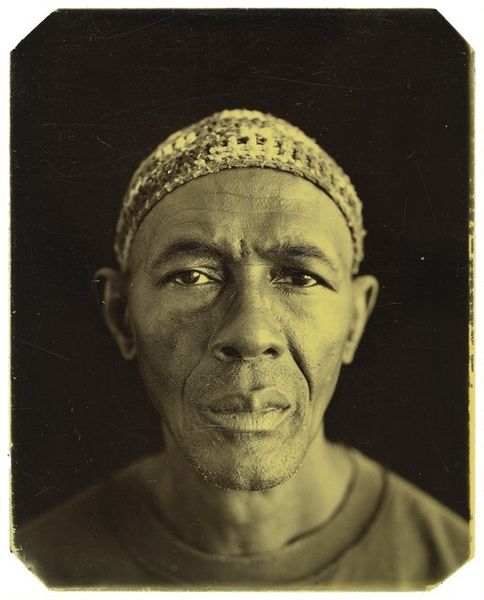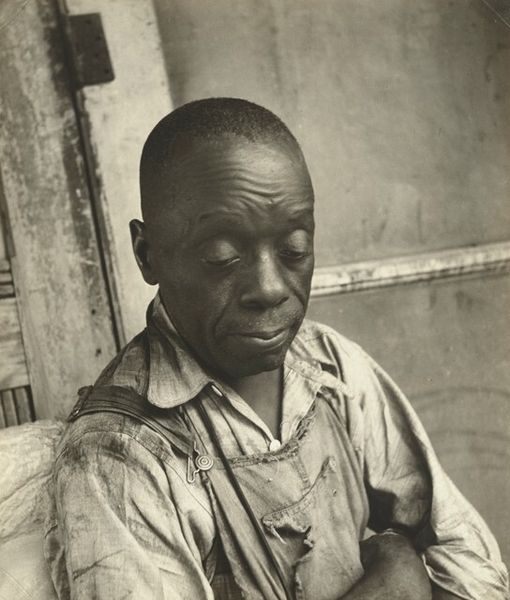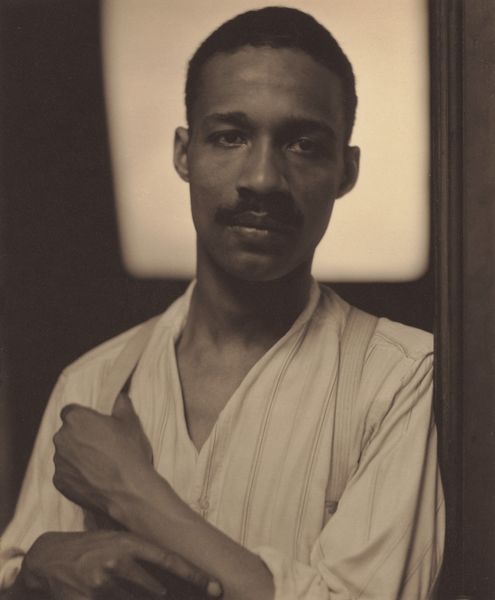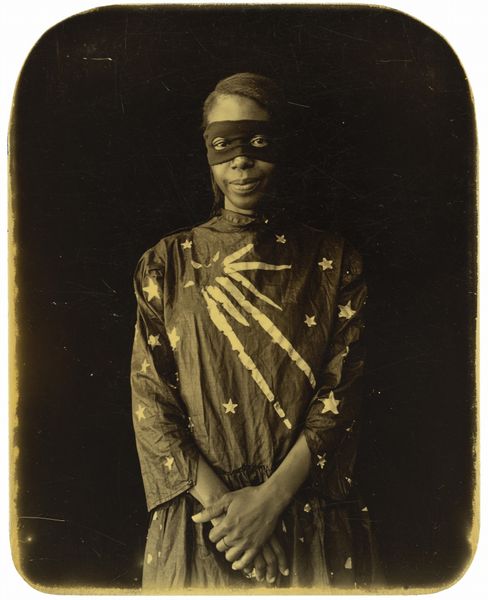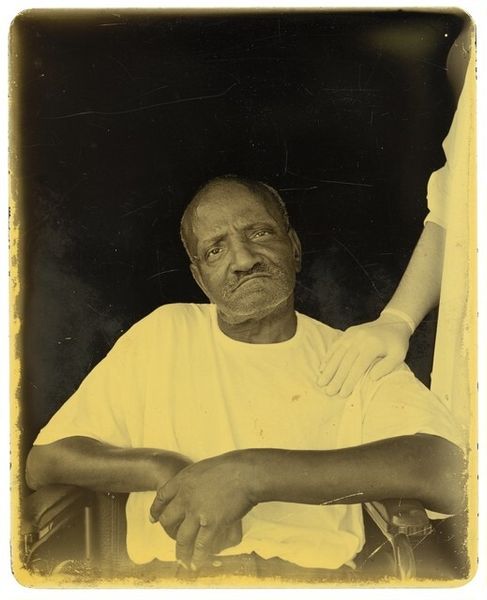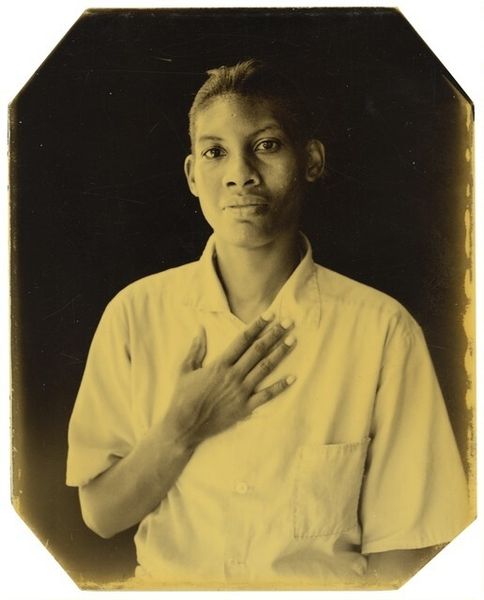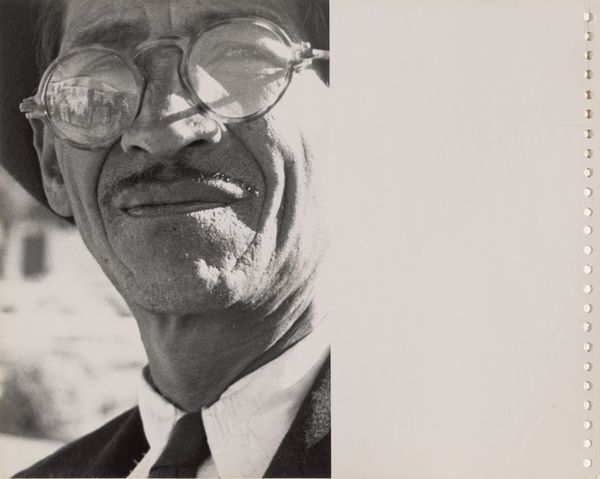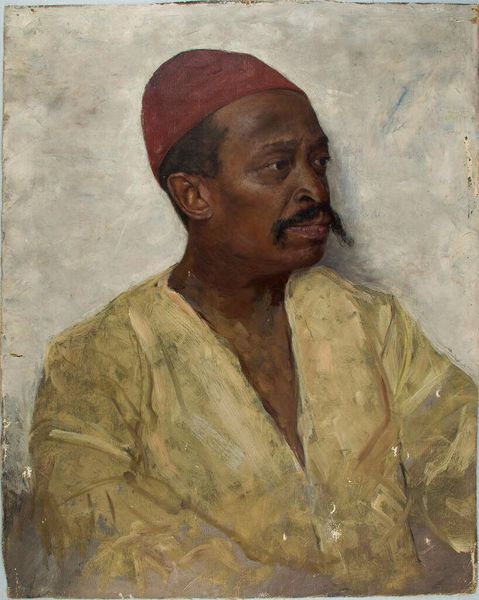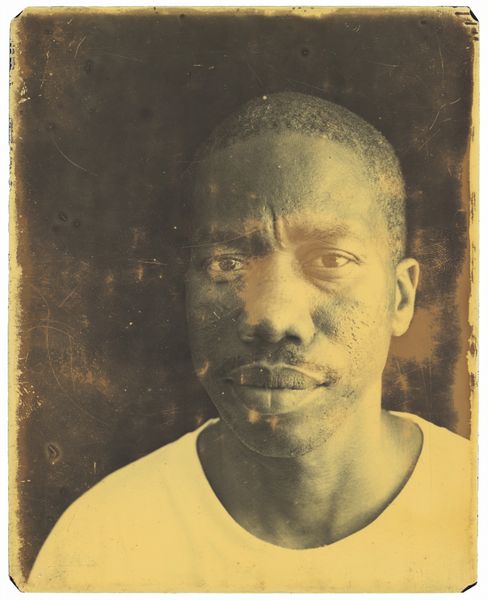
photography, gelatin-silver-print
#
portrait
#
pet photography
#
african-art
#
photo restoration
#
low key portrait
#
portrait subject
#
photography
#
portrait reference
#
single portrait
#
gelatin-silver-print
#
portrait character photography
#
portrait photography
#
fine art portrait
#
realism
#
celebrity portrait
Dimensions: image/plate: 12.6 × 10.1 cm (4 15/16 × 4 in.)
Copyright: National Gallery of Art: CC0 1.0
Curator: Deborah Luster's photographic print, "Johnny Hayes, 'Dead Eye,' Transylvania, Louisiana," created between 1998 and 2002, is certainly striking. What are your initial thoughts? Editor: Immediately, the tonality and format strike me as almost archaic. There's a patina suggesting something found, yet clearly, the subject’s attire situates this work much closer to our time. The hat itself looks hand-crocheted and its tactile quality is immediately noticeable, juxtaposed with the smooth sheen of the eye patch. Curator: You're right. The artist’s approach in presenting this portrait, using a gelatin-silver print, calls to mind historical photographic processes while engaging with a contemporary subject. Transylvania, Louisiana, holds historical significance as a plantation area, and Luster has focused much of her work on under-represented communities in that region. Editor: The imperfection of the photograph lends a hand-crafted element that subverts traditional hierarchies in art. There's something really potent about focusing on a manual process to depict lives of individuals often ignored. It forces a recognition of labor in its many forms—both the photographer’s and that of the subject, implied in their clothes and the lines of their face. The slight blur suggests it's less about flawless representation and more about the traces of someone's lived reality. Curator: Indeed, the 'Dead Eye' title also invokes various possible interpretations, from referencing a certain skillset or ability, maybe in hunting or some other trade associated with the Louisiana area, but it could be a broader commentary on seeing or not seeing. Editor: And let's not ignore the setting of the scene. Even in the photo you can make out the blur of someone in the background behind Johnny. The way in which the photo brings focus to an often unfocused gaze through light, the labor is both clear and obscures certain details and realities from the view. Curator: Absolutely, and the choices regarding its materiality become quite telling about what or who has value and what has been overlooked. The subject’s gaze compels us to confront both personal narratives and the collective memory ingrained in that location. Editor: It gives me plenty to reflect on. Curator: Likewise.
Comments
No comments
Be the first to comment and join the conversation on the ultimate creative platform.
